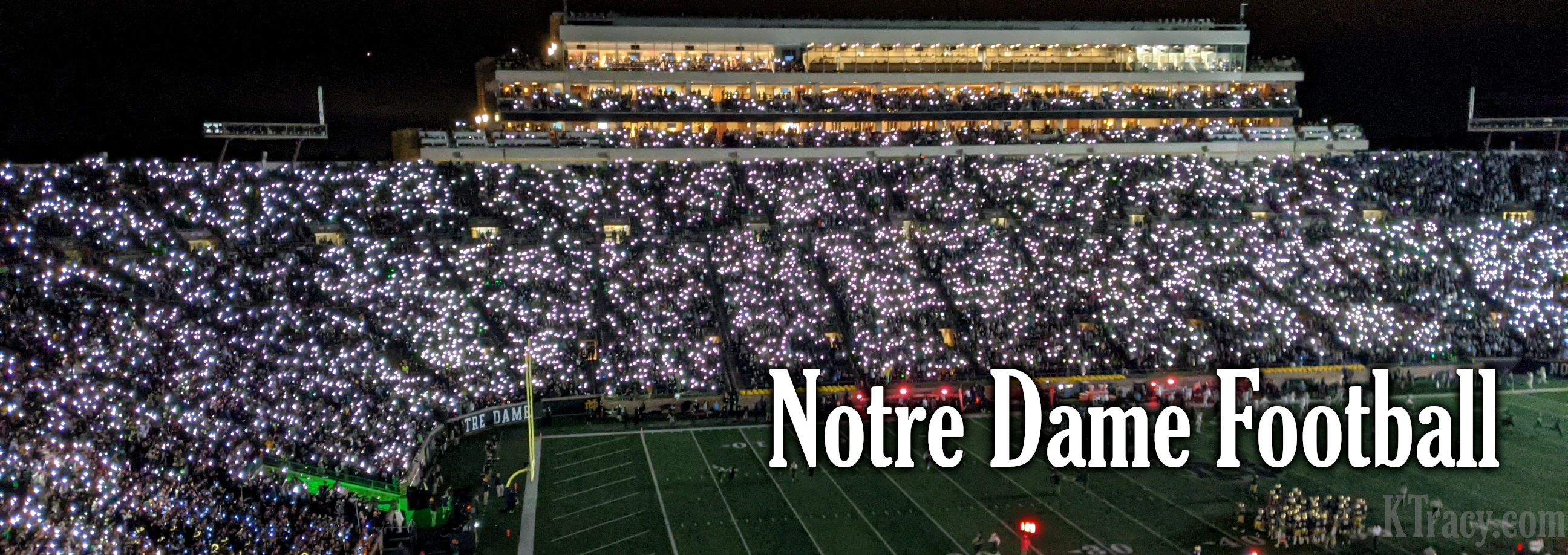Notre Dame Blue-Gold Game: A New Era of Spring Football

The 2025 Notre Dame Blue-Gold Game marked a significant shift in the traditional spring football format, captivating fans with its innovative structure and providing a glimpse into the team's future. Held on April 12, 2025, at Notre Dame Stadium, the game featured a unique offense versus defense scrimmage, divided into three periods of seven drives each. This format, designed to simulate various game situations, had my dad and me both engaged throughout the entire game, as we marveled at the constant action and strategic adjustments. The Blue team (offense) emerged victorious with a score of 76-31 over the Gold team (defense), but beyond the final tally, the game offered valuable insights into the quarterback competition and the potential evolution of Notre Dame's spring practices.
One of the standout features of this year's Blue-Gold Game was its new format, consisting of three periods with seven drives each, totaling 21 opportunities for the offense and defense to shine. Each drive started at different field positions, mimicking real-game scenarios and keeping the pace brisk and unpredictable. The scoring system added another layer of intrigue: the offense earned points for touchdowns, field goals, first downs, and plays over 20 yards, while the defense scored for stops, sacks, and tackles for loss. In his post-game press conference, Coach Marcus Freeman noted that he needs to re-evaluate the point system, a comment that implies this format might not be the last Blue-Gold Game of its kind, which is encouraging for fans who enjoyed the fresh approach. However, some tweaks could enhance fairness, such as removing the point awarded for first downs, which felt overly generous, and reducing field goals to less than three points to better align with their in-game value.
The quarterback competition took center stage, with Steve Angeli, Kenny Minchey, and CJ Carr each showcasing their skills under the new format. Their performances provided a mix of efficiency, explosiveness, and resilience, making the battle for the starting role as intriguing as ever. Below is a table summarizing their statistics, including passing yards per attempt and per completion, calculated from their respective outputs:
| Quarterback | Completions/Attempts | Passing Yards | Touchdowns | Interceptions | Yards per Attempt | Yards per Completion |
|---|---|---|---|---|---|---|
| CJ Carr | 14/19 | 170 | 2 | 1 | 8.95 | 12.14 |
| Kenny Minchey | 6/14 | 106 | 1 | 0 | 7.57 | 17.67 |
| Steve Angeli | 8/11 | 108 | 1 | 0 | 9.82 | 13.50 |
CJ Carr, undoubtedly possessing the best arm of the trio, led with 170 passing yards and two touchdowns, reinforcing why I entered the stadium as his fan. His 8.95 yards per attempt and 12.14 yards per completion highlight his ability to stretch the field, a trait that excites any Notre Dame supporter. Steve Angeli impressed with his efficiency, completing 8 of 11 passes for 108 yards and a touchdown, boasting the highest yards per attempt at 9.82. Kenny Minchey, despite a lower completion rate of 6 out of 14, averaged an eye-popping 17.67 yards per completion and added a rushing touchdown, hinting at his dynamic potential even under restrictive conditions.
Yet, the decision to keep all quarterbacks as touch-tackle only felt like an unfair handicap to Kenny Minchey, whose running ability is an important weapon in his arsenal. Minchey’s elusiveness and capacity to gain yards on the ground were neutralized, limiting him to half his talent and skewing the evaluation of his full skill set. If the goal was to limit injuries, a more nuanced approach could have been taken: allow Minchey to be live, letting him leverage his mobility, while keeping Carr and Angeli as touch-only to protect their health. Watching from the stands, I saw Minchey make plays (or almost make plays with his legs) that shifted my perspective; despite entering as a CJ Carr fan, I left as a Minchey supporter, convinced that his dual-threat nature could elevate the offense if fully unleashed. This rule, while well-intentioned, may have obscured the true pecking order among the quarterbacks.
With regards to the other positions, I have to say that the freshmen Wide Receivers are already doing a lot of things the veterans on this team have failed to do the past few years, giving me a lot of hope for the future of the program and our ability to attract a true 5-star QB in the near future. The running backs were on point. I was excited to see the tight ends get involved in the passing game after not seeing much of that last year. Finally, the Notre Dame defensive secondary looked awesome and made several plays they had no business making. My only concern was run defense and line and linebacker tackling.
In conclusion, the 2025 Notre Dame Blue-Gold Game was a triumph of innovation and competition, leaving fans like my dad and me buzzing with excitement from start to finish. The three-period, seven-drive format proved engaging, and Coach Freeman’s willingness to refine the point system signals a bright future for this spring tradition. While CJ Carr’s arm strength and Steve Angeli’s precision stood out, Kenny Minchey’s performance, even under constraints, stole the show for me, turning me into his fan by game’s end. As Notre Dame heads into the fall, the quarterback race remains wide open, and adjustments to rules and scoring could make next year’s Blue-Gold Game an even better showcase of the team’s talent.
Go Irish!
